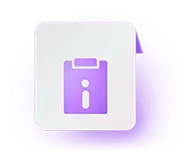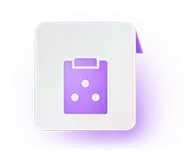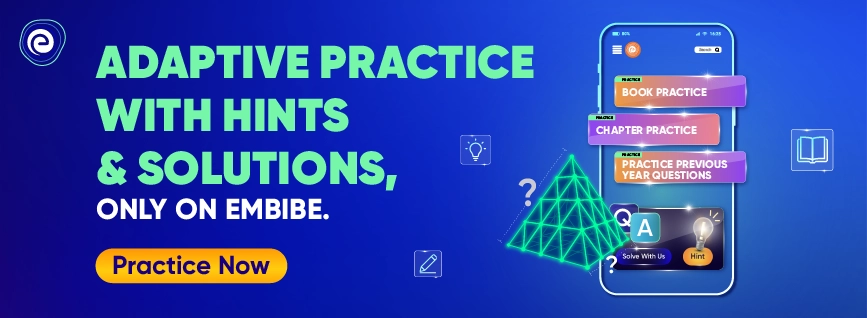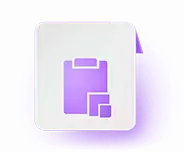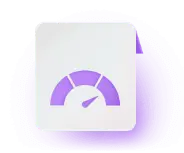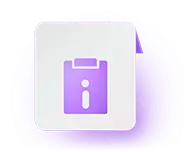- Written by Harshitha A
- Last Modified on 10-12-2024
Manipur Board Class 8 Exam 2025
The Board of Secondary Education Manipur (BSEM) is a school education board in Manipur, India. BSEM controls, regulate, organises, and looks after the matters associated with school education in Manipur. The board was established in 1972.
The BOSEM Board of Secondary Education, Manipur is the governing body for the 8th Manipur Board exams. The 8th Manipur Board exams are usually held in February, and the exam dates will be announced soon by the board. However, in order to have a strong exam preparation, students must be familiar with the 8th Manipur Board syllabus. In this article, we have provided all the important information regarding that.
Manipur Board Class 8 Exam Summary
The Manipur Secondary and Higher Secondary Education Board (BSEM) governs secondary and higher secondary education in Manipur. Every year, the Manipur board administers two of the most popular exams in the state: the Class 10 and Class 12 exams.
Co-curricular activities are also valued at BSEM. According to the BSEM guidelines, the examination is divided into two terms, the weightage of which is given below:
| Term |
Assessment (%) |
Total (%) |
| Formative Assessment (FA) |
Summative Assessments (SA) |
| Term I |
10% |
40% |
50% |
| Term II |
10% |
40% |
50% |
| Total |
20% |
80% |
100% |
Manipur Board Class 8 Exam Scholastic Areas
Formative Assessment (FA): Formative assessment includes not only the pen-paper test but also testing through oral testing, quizzes, puzzles, visual testing, interviews, assignment, practicals, projects, group activities, etc.
Summative Assessment (SA): As decided by the school authority, strictly following the guidelines of BSEM. Under this assessment process, the students will be examined based on the syllabus and curriculum of BSEM Class 8.
Manipur Board Class 8 Co-scholastic Areas
The BSEM believes that co-scholastic skills are as important as scholastic skills. Hence, these skills will also be assessed for the students. Co-scholastic skills include Attitude and Values, Health and Physical Education, Aesthetic Skills, Participation and Achievement in Literary and Creative Skills.
Manipur Board Official Website Link
https://bsem.nic.in/downloads.html
Manipur Board Class 8 Exam Pattern
The exam pattern of the Manipur Board consists of the marks distribution, exam duration and minimum qualifying marks. For better exam preparation, students should be aware of the Manipur Board exam pattern. Exams are broadly divided into two categories when the CCE pattern is in use:
- Periodic Tests: In June, July, October, and November, there will be four tests in each subject.
- Term Tests: Two tests in every subject in September and February.
20% of marks are kept for internal assessment in each subject, and 80% of marks are kept for external examination.
Manipur Board Class 8 – List of Subjects
- First language
- Social science
- Optional subject
- Science
- Mathematics
- English
Manipur Board Class 8 2025 Exam Pattern
| Subject |
Total Marks |
Pass Marks |
Duration (in hours) |
| English |
80 |
20 |
3 |
| Social Science |
80 |
20 |
3 |
| Mathematics |
80 |
20 |
3 |
| Science |
80 |
20 |
3 |
| Home Science |
80 |
20 |
3 |
Manipur Board Class 8 Exam Syllabus
The curriculum and syllabus for all classes are designed by BSEM, and schools affiliated with the Manipur Board must follow it. While studying for exams, students must strictly adhere to the BSEM. To obtain maximum marks in the final exam, students should know their subject-wise syllabus, so that they can create a comprehensive study plan. Scroll down to know the Manipur Board Class 8 syllabus.
Syllabus for BSEM Class 8 Maths
Math is a subject that requires proper planning and learning resources in order to perform well. Students must have an up-to-date syllabus in order to study without interruption. The following is the Manipur Board Class 8 Maths syllabus:
| Units |
Topics |
| Number System |
(i) Rational Numbers:
• Properties of rational numbers (including identities). The general form of expression to describe properties.
• Consolidation of operations on rational numbers.
• Representation of rational numbers on the number line
• Between any two rational numbers there lies another rational number (Making children see that if we take two rational numbers then unlike for whole numbers, in this case, you can keep finding more and more numbers that lie between them.)
• Word problem (higher logic, two operations, including ideas like area)
(ii) Powers:
• Integers as exponents.
• Laws of exponents with integral powers
(iii) Squares, Square roots, Cubes, Cube roots:
• Square and Square roots
• Square roots using factor method and division method for numbers containing (a) no more than total 4 digits and (b) no more than 2 decimal places
• Cubes and cubes roots (only the factor method for numbers containing at most 3 digits)
• Estimating square roots and cube roots. Learning the process of moving nearer to the required number.
(iv) Playing with numbers:
• Writing and understanding a 2 and 3-digit number in generalised form (100a + 10b + c, where a, b, c can be only digit 0-9) and engaging with various puzzles concerning this. (Like finding the missing numerals represented by alphabets in sums involving any of the four operations). Children solve and create problems and puzzles.
• Number puzzles and games
• Deducing the divisibility test rules of 2, 3, 5, 9, and 10 for a two
or three-digit number expressed in the general form. |
| Algebra |
(i) Algebraic Expressions:
• Multiplication and division of algebraic exp.(Coefficient should be integers)
• Some common errors (e.g. 2 + x ≠ 2x, 7x + y ≠ 7xy )
• Identities (a ± b)2 = a2 ± 2ab + b2, a2 – b2= (a – b) (a + b)
•Factorisation (simple cases only) as examples the following types a(x + y), (x ± y)2, a2 – b2, (x + a).(x + b)
•Solving linear equations in one variable in contextual problems
involving multiplication and division (word problems) (avoid complex coefficient in the equations). |
| Ratio and Proportion |
• Slightly advanced problems involving applications on percentages, profit & loss, overhead expenses, discount, and tax.
• Difference between simple and compound interest (compounded yearly up to 3 years or half-yearly up to 3 steps only), arriving at the formula for compound interest through patterns and using it for simple problems.
• Direct variation – Simple and direct word problems
• Inverse variation – Simple and direct word problems
• Time & work problems– Simple and direct word problems. |
| Geometry |
(i) Understanding shapes:
• Properties of quadrilaterals – The sum of angles of a quadrilateral is equal to 3600 (By verification)
• Properties of a parallelogram (By verification)
(i) Opposite sides of a parallelogram are equal,
(ii) Opposite angles of a parallelogram are equal,
(iii) Diagonals of a parallelogram bisect each other. [Why (iv), (v) and (vi) follow from (ii)]
(iv) Diagonals of a rectangle are equal and bisect each other.
(v) Diagonals of a rhombus bisect each other at right angles.
(vi) Diagonals of a square are equal and bisect each other at right angles.
(ii) Representing 3-D in 2-D
• Identify and Match pictures with objects [more complicated e.g.
nested, joint 2-D and 3-D shapes (not more than 2)].
• Drawing 2-D representation of 3-D objects (Continued and extended)
• Counting vertices, edges & faces & verifying Euler’s relation for 3-D figures with flat faces (cubes, cuboids, tetrahedrons, prisms and pyramids)
(iii) Construction: Construction of Quadrilaterals:
• Given four sides and one diagonal
• Three sides and two diagonals
• Three sides and two included angles
• Two adjacent sides and three angles |
| Mensuration |
(i) Area of a trapezium and a polygon.
(ii) Concept of volume, measurement of volume using a basic unit, the volume of a cube, cuboid and cylinder
(iii) Volume and capacity (measurement of capacity)
(iv) Surface area of a cube, cuboid, or cylinder. |
| Data handling |
(i) Reading bar graphs, and ungrouped data, arranging it into groups, representing grouped data through bar graphs, constructing and interpreting bar graphs.
(ii) Simple Pie charts with reasonable data numbers
(iii) Consolidating and generalising the notion of chance in events like tossing coins, dice etc. Relating it to chance in life events. Visual representation of frequency outcomes of repeated throws of the same kind of coins or dice. Throwing a large number of identical dice/coins together and aggregating the result of the throws to get a large number of individual events. Observing the aggregating
numbers over a large number of repeated events. Comparing the data for a coin. Observing strings of throws, the notion of randomness. |
| Introduction to graphs: |
PRELIMINARIES
(i) Axes (Same units), Cartesian Plane
(ii) Plotting points for different kinds of situations (perimeter vs length for squares, area as the functions of the side of a square, plotting of multiples of different numbers, simple interest vs number of years etc.)
(iii) Reading off from the graphs
• Reading of linear graphs
• Reading of distance vs time graph. |
Syllabus for BSEM Class 8 Science
Students must carefully review the syllabus before deciding which chapters to study first in order to perform well on the Science exam. For students’ convenience, the Manipur Board 8th Science syllabus is provided below:
| Chapters |
Name of the Chapters |
Sub Topics |
| Chapter 1 |
Crop Production and Management |
1.1: Agricultural Practices
1.2: Basic Practices of Crop Production
1.3: Preparation of Soil
1.4: Sowing
1.5 Adding Manure and Fertilisers
1.6: Irrigation
1.7: Protection from Weeds
1.8: Harvesting
1.9: Storage
1.10: Food from Animals |
| Chapter 2 |
Microorganisms: Friend or Foe |
2.1: Microorganisms
2.2: Where do Microorganisms Live?
2.3: Microorganisms and Us
2.4: Harmful Microorganisms
2.5: Food Preservation
2.6: Nitrogen Fixation
2.7: Nitrogen cycle |
| Chapter 3 |
Synthetic Fibres and Plastics |
3.1: What are Synthetic Fibres?
3.2: Types of Synthetic Fibres
3.3: Characteristics of Synthetic Fibres
3.4: Plastics
3.5: Plastics as Materials of Choice
3.6: Plastics and the Environment |
| Chapter 4 |
Materials: Metals and Non-Metals |
4.1: Physical Properties of Metals and Non-metals
4.2: Chemical Properties of Metals and Non-metals
4.3: Uses of Metals and Non-metals |
| Chapter 5 |
Coal and Petroleum |
5.1: Coal
5.2: Petroleum
5.3: Natural Gas
5.4: Some Natural Resources are Limited |
| Chapter 6 |
Combustion and Flame |
6.1: What is Combustion?
6.2: How Do We Control Fire?
6.3 Types of Combustion
6.4: Flame
6.5: Structure of a Flame
6.6: What is a Fuel?
6.7: Fuel Efficiency |
| Chapter 7 |
Conservation of Plants and Animals |
7.1: Deforestation and Its Causes
7.2: Consequences of Deforestation
7.3: Conservation of Forest and Wildlife
7.4: Biosphere Reserve
7.5: Flora and Fauna
7.6: Endemic Species
7.7: Wildlife Sanctuary
7.8: National Park
7.9: Red Data Book
7.10: Migration
7.11: Recycling of Paper
7.12: Reforestation |
| Chapter 8 |
Cell – Structure and Functions |
8.1: Discovery of the Cell
8.2: The Cell
8.3: Organisms show Variety in Cell Number, Shape and Size
8.4: Cell Structure and Function
8.5: Parts of the Cell
8.6: Comparison of Plants and Animals Cells |
| Chapter 9 |
Reproduction in Animals |
9.1: Modes of Reproduction
9.2: Sexual Reproduction
9.3: Asexual Reproduction |
| Chapter 10 |
Reaching the Age of Adolescence |
10.1: Adolescence and Puberty
10.2: Changes at Puberty
10.3: Secondary Sexual Characters
10.4: Role of Hormones in Initiating Reproductive Function
10.5: Reproductive Phase of Life in Humans
10.6: How is the Sex of the Baby Determined?
10.7: Hormones other than Sex Hormones
10.8: Role of Hormones in Completing the Life History of Insects and Frogs
10.9: Reproductive Health |
| Chapter 11 |
Force and Pressure |
11.1: Force: A push or a Pull
11.2: Forces are due to an Interaction
11.3: Exploring Forces
11.4: A Force can Change the State of Motion
11.5: Force can Change the Shape of an object
11.6: Contact Forces
11.7: Non-contact Forces
11.8: Pressure
11.9: Pressure Exerted by Liquids and Gases
11.10: Atmospheric Pressure |
| Chapter 12 |
Friction |
12.1: Force of Friction
12.2: Factors affecting Friction
12.3: Friction: A Necessary Evil
12.4: Increasing and Reducing Friction
12.5: Wheels Reduce Friction
12.6: Fluid Friction |
| Chapter 13 |
Sound |
13.1: Sound is Produced by Vibrating Bodies
13.2: Sound Produced by Humans
13.3: Sounds Needs a Medium for Propagation
13.4: We Hear Sound through Our Ears
13.5: Aptitude, Time Period and Frequency of a vibration
13.6: Audible and Inaudible Sounds
13.7: Noise and Music
13.8: Noise Pollution |
| Chapter 14 |
Chemical Effects of Electric Current |
14.1: Do Liquids Conduct Electricity?
14.2: Chemical Effects Of Electric Current
14.3: Electroplating |
| Chapter 15 |
Some Natural Phenomena |
15.1: Lightning
15.2: Charging by Rubbing
15.3: Types of Charges and Their Interaction
15.4: Transfer of Charge
15.5: The Story of Lightning
15.6: Lightning Safety
15.7: Earthquakes |
| Chapter 16 |
Lights |
16.1: What makes Things Visible
16.2: Laws of Reflection
16.3: Regular and Diffused Reflection
16.4: Reflected Light Can be Reflected Again
16.5: Multiple Images
16.6: Sunlight – White or Coloured
16.7: What is inside Our Eyes?
16.8: Care of the Eyes
16.9: Visually Impaired Persons Can Read and Write
16.10: What is the Braille System? |
| Chapter 17 |
Stars and The Solar System |
17.1: The Moon
17.2: The Stars
17.3: Constellations
17.4: The Solar System
17.5: Some Other Members of the Solar System |
| Chapter 18 |
Pollution of Air and Water |
18.1: Air Pollution
18.2: How Does Air Get Polluted?
18.3: Case Study- The Taj Mahal
18.4: Greenhouse Effect
18.5: What can be done?
18.6: Water Pollution
18.7: How Does Water Get Polluted?
18.8: What is Potable Water and How is Water Purified?
18.9: What Can be Done? |
Syllabus for BSEM Class 8 Social Science
The Social Science subject is divided into three sub-subjects: History, Civics, and Geography. To help students with their studies, we have provided the syllabus for all the three subjects below:
| Syllabus for BSEM Class 8 History |
| Chapters |
Name of the Chapters |
| Chapter 1 |
How, When and Where |
| Chapter 2 |
From Trade to Territory |
| Chapter 3 |
Ruling the Countryside |
| Chapter 4 |
Tribals, Dikus and the Vision of the Golden Age |
| Chapter 5 |
When People Rebel |
| Chapter 6 |
Colonialism and the City |
| Chapter 7 |
Weavers, Iron Smelters and Factory Owners |
| Chapter 8 |
Civilising the “Native”, Educating the Nation |
| Chapter 9 |
Women, Caste and Reform |
| Chapter 10 |
The Changing World of Visual Arts |
| Chapter 11 |
The Making of the National Movement 1870s-1945 |
| Chapter 12 |
India after Independence |
In Manipur Board Class 8 Geography, students will learn about the different types of resources, agriculture, industries, etc. The BSEM Class 8 Geography syllabus is as follows:
| Syllabus for BSEM Class 8 Geography |
| Chapters |
Name of the Chapters |
| Chapter 1 |
Resources |
| Chapter 2 |
Land, Soil, Water, Natural Vegetation and Wildlife Resources |
| Chapter 3 |
Mineral and Power Resources |
| Chapter 4 |
Agriculture |
| Chapter 5 |
Industries |
| Chapter 6 |
Human Resources |
The Manipur Board Class 8 Political Science/Civics syllabus is tabulated below:
| Syllabus for BSEM Class 8 Civics/Political Science |
| Chapters |
Name of the Chapters |
| Unit One: The Indian Constitution and Secularism |
| Chapter 1 |
The Indian Constitution |
| Chapter 2 |
Understanding Secularism |
| Unit Two: Parliament and the Making of Laws |
| Chapter 3 |
Why do we need a Parliament? |
| Chapter 4 |
Understanding Laws |
| Unit Three: The Judiciary |
| Chapter 5 |
Judiciary |
| Chapter 6 |
Understanding Our Criminal Justice System |
| Unit Four: Social Justice and the Marginalised |
| Chapter 7 |
Understanding Marginalism |
| Chapter 8 |
Confronting Marginalism |
| Unit Five: Economic Presence of the Government |
| Chapter 9 |
Public Facilities |
| Chapter 10 |
Law and Social Justice |
Syllabus for BSEM Class 8 English
English for Class 8 BSEM is divided into two parts
- English Literature, and
- English Grammar and Composition
The BSEM Class 8 English Literature section is based on a main textbook of English and a Supplementary Reader in English. Let us see what is included in each of the two books.
| Syllabus for BSEM Class 8 English (Honeydew) |
| Chapters |
Name of the Chapters |
| Chapter 1 |
The Best Christmas Present in the World |
| Poem |
The Ant and the Cricket |
| Chapter 2 |
The Tsunami |
| Poem |
Geography Lesson |
| Chapter 3 |
Glimpses of the Past |
| Poem |
Macavity: The Mystery Cat |
| Chapter 4 |
Bepin Choudhury’s Lapse of Memory |
| Poem |
The Last Bargain |
| Chapter 5 |
The Summit Within |
| Poem |
The School Boy |
| Chapter 6 |
This is Jody’s Fawn |
| Poem |
The Duck and the Kangaroos |
| Chapter 7 |
A Visit to Cambridge |
| Poem |
When I set out for Lyonnesse |
| Chapter 8 |
A Short Monsoon Diary |
| Poem |
On the Grasshopper and Cricket |
| Chapter 9 |
The Great Stone Face – I |
| Chapter 10 |
The Great Stone Face – II |
Syllabus For BSEM Class 8 English (It So Happened – Supplementary Reader in English for Class VIII)
| Syllabus for BSEM Class 8 English (It So Happened) |
| Chapters |
Name of the chapters |
| Chapter 1 |
How the Camel got his Hump |
| Chapter 2 |
Children at work |
| Chapter 3 |
The Selfish Giant |
| Chapter 4 |
The Treasure within |
| Chapter 5 |
Princess September |
| Chapter 6 |
The Fight |
| Chapter 7 |
The Open Window |
| Chapter 8 |
Jalebis |
| Chapter 9 |
The Comet – I |
| Chapter 10 |
The Comet – II |
Syllabus For BSEM Class 8 English Grammar and Composition
This section is divided further into two subsections: English Grammar and English Composition (Writing). The following is the detailed syllabus for these two sections of BSEM Class 8:
English Grammar Syllabus For BSEM Class 8:
The Class 8 English grammar syllabus has the following topics:
| Unit |
Name of the Unit |
| a |
Order of Words and Clauses |
| b |
Direct and Indirect Speech |
| c |
Active and Passive Voice |
| d |
Tenses |
| e |
Noun |
| f |
Pronoun |
| g |
Verb |
| h |
Adverb |
| i |
Prepositions |
| j |
Conjunction |
| k |
Phrases and Idioms |
| l |
Vocabulary |
| m |
Comprehension Reading |
This section tests your writing ability in English. The following topics are covered in the English Composition syllabus:
| Unit |
Name of the Unit |
| a |
Notice |
| b |
Story |
| c |
Formal and Informal Letters |
| d |
Diary Entry |
| e |
Essay |
Syllabus for BSEM Class 8 Hindi
The syllabus for BSEM Class 8 Hindi can be broadly categorised into two parts:
- Hindi Literature, and
- Hindi Grammar and Composition
The syllabus for BSEM Class 8 Hindi Literature is based on the following three books:
- Durva – Bhag 3 (Dwitiya Bhasha)
- Text Book in Hindi Vasant – Bhag 3
- Bharat Ki Khoj (Supplementary)
Syllabus For BSEM Class 8 Hindi Literature: Vasant
| Chapters Number |
Name of the Chapters |
| 1 |
ध्वनि (कविता) |
| 2 |
लाख की चूड़िया (कहानी) |
| 3 |
बस की यात्रा |
| 4 |
दीवानों की हस्ती (कविता) |
| 5 |
चिट्ठियों की अनूठी दुनिया (निबंध) |
| 6 |
भगवान के डाकिए (कविता) |
| 7 |
क्या निराश हुआ जाए (निबंध) |
| 8 |
यह सब से कठिन समय नहीं (कविता) |
| 9 |
कबीर की साखियाँ |
| 10 |
कामचोर (कहानी) |
| 11 |
जब सिनेमा ने बोलना सीखा |
| 12 |
सुदामा चरित (कविता) |
| 13 |
जहाँ पहिया है |
| 14 |
अकबरी लोटा (कहानी) |
| 15 |
सूर के पद (कविता) |
| 16 |
पानी की कहानी (निबंध) |
| 17 |
बाज और साँप (कहानी) |
| 18 |
टोपी (कहानी) |
Manipur Board Class 8 Study Plan to Maximise Score
Class 8 is important as a student because it allows you to choose whether you want to pursue a career in the sciences, arts, or engineering. In addition, various interests are taught. As a result, understanding the fundamentals and performing well in Class 8 Manipur Board are critical. This section on Manipur Board class 8 preparation tips will assist you in developing a strategy and achieving high grades.
Manipur Board Class 8 Preparation Tips
To achieve high grades in class 8 Manipur Board, you must become familiar with the question format and topic. Students who don’t know how to study effectively for an exam are under tremendous pressure to perform well, which causes stress and anxiety. The following study tips will help you create a study plan and perform well on exams:
- A detailed strategy and a plan for completing your studies are a must to secure good marks in any examination.
- You must have a good understanding of your strengths and weaknesses and should plan the preparations accordingly.
- You should keep a positive attitude and start your preparation journey as early as possible.
- For chapters involving numerical and lots of calculations, try practising as many problems as you can.
- If you face any difficulty while studying the Class 8 BSEM syllabus, you can check out Embibe for practice and study. We are here to help you with all your queries. We have a very rich library of learning material and a question bank.
- Keep a well-disciplined timetable so that you can study every day in an orderly manner.
- If you have any questions while studying, do not hesitate to seek help from your teachers or elders. Embibe provides students with round-the-clock doubt-clearing support.
- You can switch subjects or topics while you study, that way you won’t get bored or tired easily.
- Make sure you finish your whole syllabus well in advance and do not leave a lot to be completed for the end moment.
Manipur Board Class 8 Detailed Study Plan
Always keep in mind that different disciplines necessitate different preparation strategies. Follow the detailed study plan for getting the highest possible scores.
- A detailed study plan is a well-structured plan that students create, listing down their learning goals and the time to be allocated to each of them.
- It is preferable to set aside time each day for studying. Spend four to five hours per day by yourself in well-planned studies.
- If you are studying mathematics, you definitely need a pen and paper to write and practice the mathematical problems.
- While studying every subject, connect them to real-life situations. It will help you to remember every concept in an easier manner.
- Embibe has created interesting videos and practice sessions on all the 8th Class topics, and if you need a better understanding of all the concepts, you can use them.
FAQs on Manipur Board Class 8 Exam
Some of the most commonly asked questions are as follows:
Q: Where can I get BSEM Class 8 study materials?
Ans: Embibe provides Manipur Board Class 8 study material, such as books with 3D video explanations.
Q: Where can I find Manipur Board 8th grade papers from previous years?
Ans: Sign up for Embibe and you’ll be able to practise Manipur Board 8th grade previous year papers for.
Q: What is the full form of BSEM?
Ans: The Manipur Secondary and Higher Secondary Education Board is abbreviated as BSEM.
Q: Where can I take Manipur Board Class 8 mock exams?
Ans: The Manipur Board Class 8 mock tests are available at Embibe.
Q: Do you have BOSEM Class 8 Mathematics practise papers?
Ans: Students can find BOSEM Class 8 Science and Mathematics practise papers on Embibe.
Manipur Board Class 8 List of Educational Institutions
The state’s primary and secondary schools are governed by the Board of Secondary Education. The board currently has 786 high and higher secondary schools (226 government, 103 government-aided, and 457 private) affiliated with it. The state’s schools are either run by the government or by private organisations. Shishu Nistha Niketan School, Slopeland Public School, Kendriya Vidyalaya, Mega Manipur School, and others are among the notable schools in Manipur.
Here is a list of a few schools in Manipur:
| S.No. |
School Names |
| 1. |
Angam Memorial School, Liwachangning |
| 2. |
Ananda Purna School, Thoubal (Tomjing) |
| 3. |
Ananda Singh Hr. Secondary Academy, Imphal |
| 4. |
Andro High School, Andro Imphal East District |
| 5. |
Apex Christian High School, Motbung |
| 6. |
Antarctic English School, Yairipok |
| 7. |
Ank English Academy, Langmeidong |
| 8. |
Andro High School, B.P.O. Andro |
| 9. |
Angahal Higher Secondary School, Wangoi |
| 10. |
Anita Standard High School, Kwakta |
| 11. |
Alberts English School, Singjamei |
| 12. |
Alice Christian Hr. Sec. School, P.O. Ukhrul |
| 13. |
Alpha B.C.I. Memorial Academy, Thangmeiband |
| 14. |
Alpha Christian High School, Kachai Village |
| 15. |
Amuba High School, B.P.O. Khangabok |
| 16. |
Amusana High School, Keinou |
| 17. |
Amutombi Divine Life Eng. School, Wabagai |
| 18. |
Anallon Christian Institute, Lambung, Chandel |
Manipur Board Class 8 Future Exams
Exams are one way to bring out students’ knowledge, interests, capacity, and potential. Students are promoted from grade 8th to grade 9th based on Continuous Comprehensive Evaluation (CCE). Apart from this school-level examination, there are numerous competitive exams held nationally and internationally each year. These exams enhance students’ confidence and interest in subjects.
Some of the competitive exams in which Class 8 students can appear are,
- International Science Olympiad (ISO)
- International Maths Olympiad (IMO)
- English International Olympiad (EIO)
- General Knowledge International Olympiad (GKIO)
- International Computer Olympiad (ICO)
- International Drawing Olympiad (IDO)
- National Essay Olympiad (NESO)
- National Social Studies Olympiad (NSSO)
Some of the competitive exams to which grade 8 students can appear are:
- National Talent Search Examination (NTSE): Students are evaluated based on the knowledge and understanding of Science, Maths, Social Science, Mental Ability and General Knowledge. Cash prizes and scholarships facilitate qualified students for the next academic year.
- National Level Science Talent Search Exam (NLSTSE): The subjects the students must study for this exam are Maths, Physics, Chemistry, Biology and other general Awareness.
- Indian National Olympiad (INO): Physics, Chemistry, Astronomy, Biology and Junior Science are the subjects covered in the curriculum. This exam is divided into five stages. The written exam administered by the NSE is the first stage (National Standard Examination).
- GeoGenius: This exam aims to create interest in geography. Students are asked to mark various locations in India on a blank map.
- National Interactive Maths Olympiad (NIMO): This exam assesses and analyses the mental and mathematical abilities of students.









